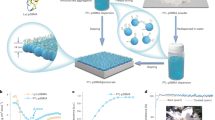Abstract
Laundering with brightener-free detergents generally restores, but does not improve, the initial whiteness of soiled white fabrics. Optical brighteners are needed to increase the total spectral radiance, which normally results in better whiteness and an impression of superior cleanliness. Today's quality detergents therefore contain optical brighteners, often at levels higher than 0.5%. The outlay for brightener at this level represents a significant portion of the total raw-material cost. Proper evaluation and selection of brightener systems (1–5) is therefore important. Selection is related to detergent type, laundry habits, fiber content of the wash load, the hue of white preferred by housewives, and other factors. These factors tend to change. For example, in recent years, cold-water washing has become more popular in the United States; the capacity of washing machines has increased; bleach dispensers have been added; more polyamide and polyester, resin-treated cotton and blended fabrics have been introduced; and improved surfactant/builder systems have been developed for detergents. New brightener systems have, of necessity, been adopted. Changes will no doubt continue. The detergent industry will consider these changes carefully and will have to update brightener systems to comply with the new conditions.
Similar content being viewed by others
References
Stensby, P. S., Soap & Chem. Spec.43, 41, April (1967).
Stensby, P. S., Ibid.43, 84, May (1967).
Stensby, P. S., Ibid.43, 80, July (1967).
Stensby, P. S., Ibid.43, 94, August (1967).
Stensby, P. S., Ibid.43, 96, September (1967).
Coppock, W. A., Pulp & Paper Mag. Can.67, 499 (1966).
Berger, A., Farbe8, #4/6, 187 (1959).
Goldwasser, S., Soap & Chem. Spec.38, 62, September (1962).
Vaeck, S. V., Ann. Sci. Textil. Belg. #1, 95, March (1966).
Coppock, W. A., Am. Dyestuff Rep.54, 343 (1965).
Keller, R., Fachorg. Textilveredlung19, 480 (1964).
Grum, F., and J. M. Patek, Tappi48, 357 (1965).
Zweidler, R., and H. Häusermann, Ency. Chem. Tech.3, 737 (1964).
Zussman, H. W., Ency. Polym. Sci. Tech.2, 606 (1965).
Villaume, F. G., JAOCS35, 558 (1958).
Zussman, H. W., Ibid.40, 695 (1963).
Siegrist, A. E., Soap & Chem. Spec.31, 44, November (1955).
Siegrist, A. E., Ibid.31, 58, December (1955).
Zussman, H. W., W. Lennon and W. Tobin, Ibid.32, 35, August (1956).
Zweidler, R., Specialities1, 14 February (1965).
Stensby, P. S., Detergent Age3, #9, 20 (1967).
Häusermann, H., and R. Keller, Textil Rundschau16, 176 (1961).
Stensby, P. S., Soap Chem. Spec.41, 85, May (1965).
Author information
Authors and Affiliations
About this article
Cite this article
Stensby, P.S. Optical brighteners as detergent additives. J Am Oil Chem Soc 45, 497–504 (1968). https://doi.org/10.1007/BF02541335
Issue Date:
DOI: https://doi.org/10.1007/BF02541335




